Prime Rib
How to Cook Perfect Prime Rib Every Time
I really love prime rib. I like it to be cooked so that it is pink all the way through, but nicely browned on the outside. In this recipe I'll explain how to cook prime rib so it turns out perfect every time.
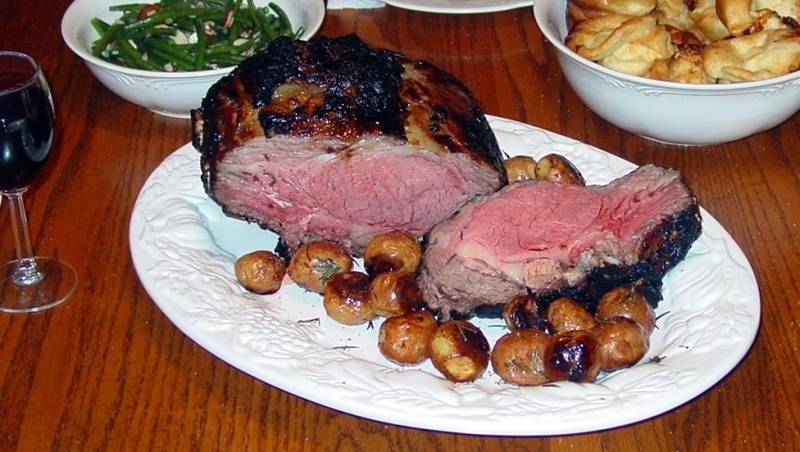
I suppose that I should explain that "prime rib" is a misnomer (I'm sure all the other recipe sites do). The actual cut of meat is a standing beef rib roast. The term "prime" refers to a quality or grade of beef that is specified by the USDA (United States Department of Agriculture). It is very unusual to find the prime quality meat in a grocery store; you usually find choice, select, standard or commercial grades. Prime is generally sold to restaurants and hotels. If you have a source for true prime beef, then you'll want to get actual prime rib. It will be more expensive, but the meat will be far more tender, juicy, and flavorful -- mainly because it has more fat finely marbled through it.
Oh... uhh... if you have ever had some beef that was tough or rubbery, then it didn't have fat marbled through it. Very lean meat will be tough. To make lean meat seem less tough, you cook it rare, and cut it into thin slices across the "grain" of the meat, that is you cut across the muscle fibers, or you have to pound it with a hammer, or treat it with some acidic tenderizing agent. Some meat that is fatty will turn out tough too, because the fat is not marbled through it, but in larger deposits, usually on the outside of the cut of meat. A good quality piece of beef will have fat marbled through it; it may also have larger deposits of fat too. It may be that the marbled fat may only be seen if you look very closely when the meat is cold, because the fat is in delicate little lace-work through the meat and it gelatinizes when cooked -- making the meat tender, so "you could cut it with a fork". And fat carries flavor too. Am I ranting? Sorry. Anyway, if you want tender tasty meat, then it will have fat on and in it.
How Big a Roast?
I generally figure about a pound of uncooked bone-in prime rib per person. On a typical standing beef rib roast, each rib with it's meat weighs about two pounds. It will get lighter during cooking as it loses some moisture. I generally don't cook prime rib that is less than about 6 pounds, no matter how few people will be eating it. The left-overs reheat fairly well -- and if you really feel that you have too much, then just send the left-overs to me.
Dry Aging
I generally do not "dry age" my prime rib. Dry aging is supposed to make the meat more tender and to concentrate the flavor. In my opinion, if you have a good cut of quality beef, it really is not necessary. Your meat will dry out to some degree when you cook it. Some butcher shops or other meat retailers dry age their beef before selling it to you. This increases the price of the meat per pound, because the same piece of meat gets lighter as you dry it out. I don't feel that it is necessary to dry age your beef, however, if you want to dry age your meat, here is how you do it: Dry your meat well with paper towels, then put the meat into a pan with a number of paper towels in the bottom and set it in your refrigerator uncovered. During the day, turn the meat every 4 hours or so, and change the paper towels as they soak up the moisture that drains from the meat. Continue to do this for one or two days, letting it drain, turning, draining, and drying it.
Before Cooking

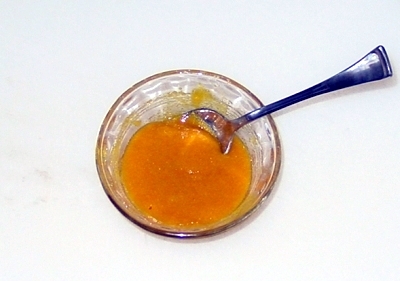
First let me say that our goal here is to cook the prime rib as evenly as possible from the edges through the center. If your prime rib roast is cold when you put it in to cook, the outside will cook more quickly than the center, and you'll have a prime rib that is rare in the middle and well done around the edges and at the ends. I take two steps to prevent this: 1) I cook the roast slowly, and 2) I leave the roast out letting it come to room temperature before I cook it. We generally have dinner in the evening, so I take the prime rib out early in the morning so it will warm up by the time I'm ready to cook it.
Before you cook your roast, dry the exterior of the roast well with paper towels, and then coat it with a mixture of prepared mustard mixed with white sugar. You will need about a Tablespoon of the prepared mustard (nothing fancy, French's or a similar mustard will do), and one to two Tablespoons of white sugar. Mix the mustard and sugar together in a small cup, adding sugar until the mixture gets thick as shown in the picture.
Cover the entire exterior of the roast with this mixture making sure to thoroughly cover not just the cut surfaces of the meat, but the exterior fat, and even the bone side of the prime rib. The sugar in this mixture will help us achieve the nice crusty browning on the outside of the meat.
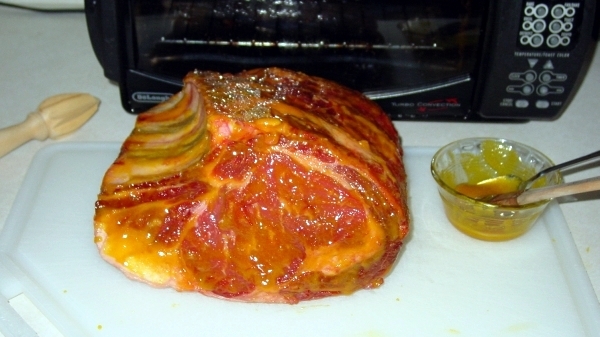
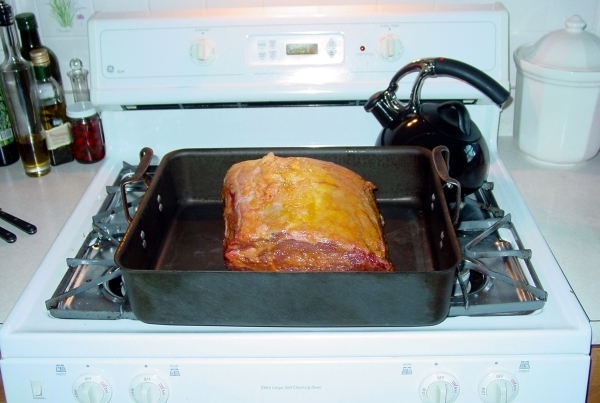
Cooking your Prime Rib
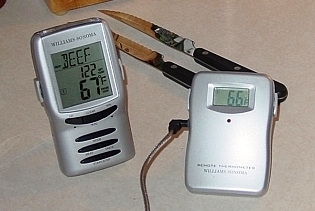
You need to start this four or five hours ahead of when you plan to serve your meal. Put the prime rib in a roasting pan bone side down. Insert a meat thermometer; I like the electronic radio probe type of thermometer[Amazon.com]. Put the roast into your oven and set the dial for 250° Fahrenheit. Cook until the thermometer reaches 125° Fahrenheit, this will probably take around four hours. Take the pan out of the oven, leaving the roast in the pan. Remove the thermometer. Cover the prime rib with aluminum foil. Finish preparing the rest of your meal.
What to serve with Prime Rib
I like to serve a nice salad, a dry red wine, Yorkshire pudding, oven roasted red rosemary potatoes, and green beans almondine, or asparagus with hollandaise sauce.
Enjoy!

This site is protected by copyright and trademark laws under US and International law. © 2002-2024 M. Craig Weaver All rights reserved.
Rendered: Thursday April 25 2024
- Disclaimer:
My opinions are not regulated by any recognized authority - I am neither competent nor authorized to dispense advice of any kind. It is probably best to ignore me.